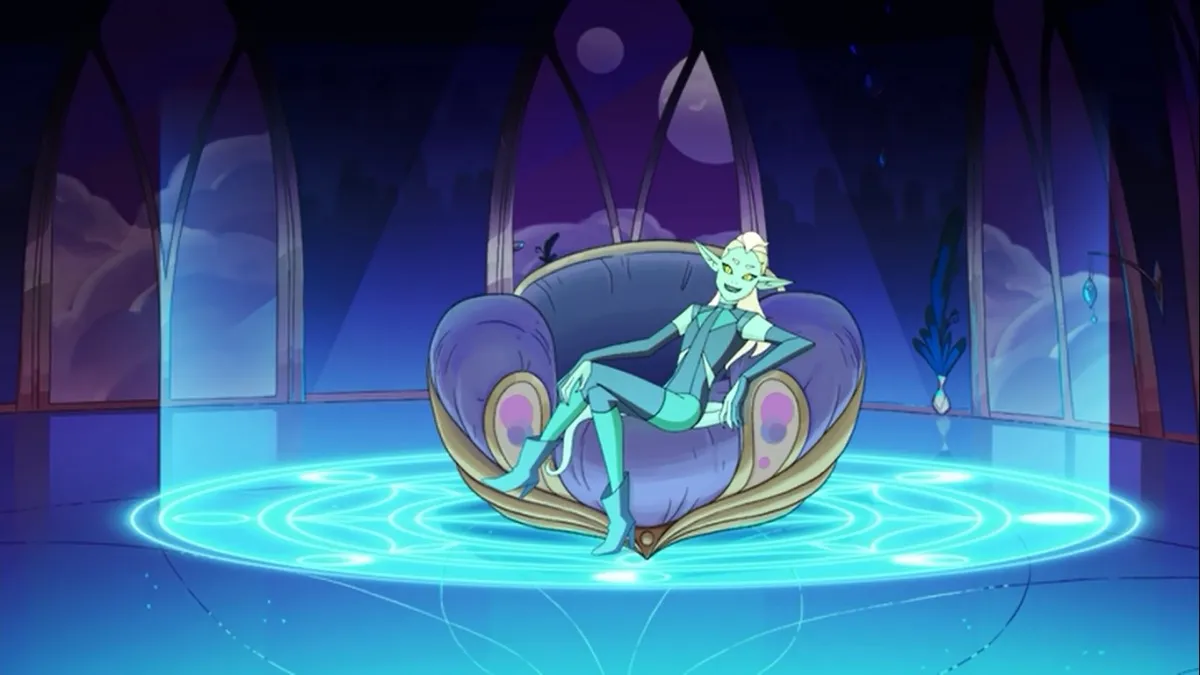Right now, there is an exhaustingly hyperbolic and overwritten piece circulating that accuses Dreamworks shows, including She-Ra and the Princesses of Power, of engaging in what the writer calls “predatory, deceptive marketing to boost LGBT viewership without intending to depict queer individuals in a meaningful way.” As a queer viewer of She-Ra, not only can I say that this is untrue, but it actively erases a show that has very much included LGBTQ characters.
A lot of the piece focuses on the failures of the show Voltron. However, what does that have to do with She-Ra?
Noelle Stevenson, the showrunner, is a recently married lesbian. She has talked often about how she wanted to create shows to provide representation for people who don’t often get to express themselves. Beyond just talking about it in the show, we have two canonically gay couples: two of the princesses (who got a whole episode for themselves this season), and Bow has two Black fathers. AND Double Trouble is a non-binary character whose pronouns are always respected and is played by a non-binary actor.
What about this is predatory? What about this is meaningless?
I’d love to know what is meaningless about seeing two Black fathers treated like actual characters and not a collection of tropes. About seeing a lesbian couple being happy together and having petty squabbles. About a non-binary character be morally grey and have their pronouns honored. Is that content we are seeing every day? I must have missed it.
Even taking out the overtly queer content, there’s plenty of queer subtext with Adora and Catra. Every time Adora sees a woman with strong arms, she blushes, and Catra acts like a jealous and petty ex about Adora the whole time. There are only maybe two heterosexual couples, and one of them isn’t together because they’re dead. She-Ra buried their straights.
She-Ra has constructed a world in which queerness is normal, and therefore, because it is normalized and possible, we don’t have to spend time worrying whether it can’t happen. It can happen. Why it hasn’t happened yet, with Adora and Catra, isn’t an issue of queerbaiting. It’s an issue of these two people are in vastly different places, and right now they aren’t romantic. It’s not that they aren’t romantic because they’re both women. They aren’t romantic because these two people are not ready to be in a relationship. They are traumatized.
Queer representation isn’t just about couples or relationships. I am a bisexual woman regardless of who I’m dating, and I can tell you that I have never seen such angry, resentful bisexual wrath in a character like Catra since Azula herself. Romance has never been at the forefront of She-Ra‘s storytelling. It has always been about friendship and the love that exists in that space.
I’m not defending She-Ra simply because I love it, or to insist that it’s perfect. I’m defending it because it does the work. It does the work for representation on multiple levels in terms of queerness, body diversity, highlighting people of color, having non-white voice actors playing leads, etc. It uses the medium of animation to tell a beautiful, inclusive story. There is nothing wrong with criticizing She-Ra, but to claim that it’s engaging in queerbaiting and that it has failed queer audiences simply because Adora and Catra aren’t together is the biggest misunderstanding of what queer representation should look like in a show.
To She-Ra fans who’ve been upset by that article, know that everything reported about our show is a lie. If he has sources, they misled him. The characterization and namedrop of 2 of my LGBT coworkers is disgusting and warrants a retraction and an apology.
— Shane Lynch (@MsShaneLynch) January 8, 2020
(image: Dreamworks)
Want more stories like this? Become a subscriber and support the site!
—The Mary Sue has a strict comment policy that forbids, but is not limited to, personal insults toward anyone, hate speech, and trolling.—










Published: Jan 9, 2020 04:47 pm